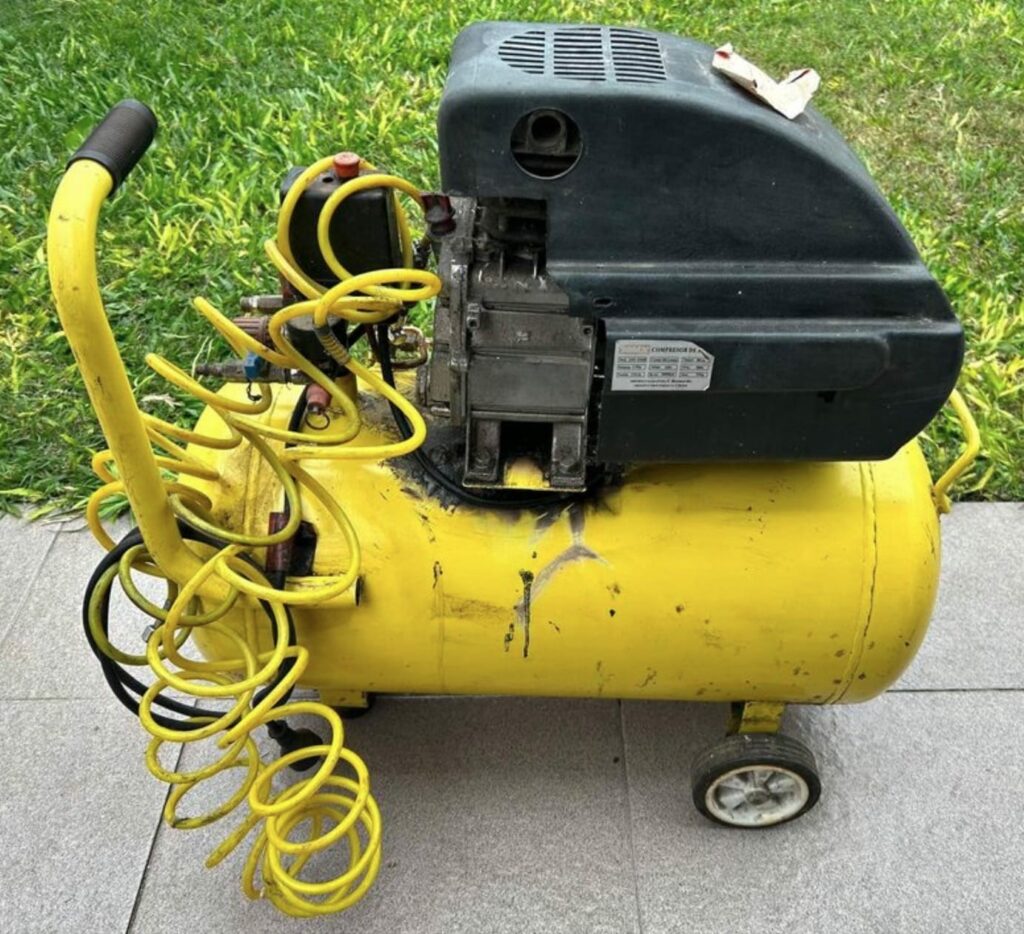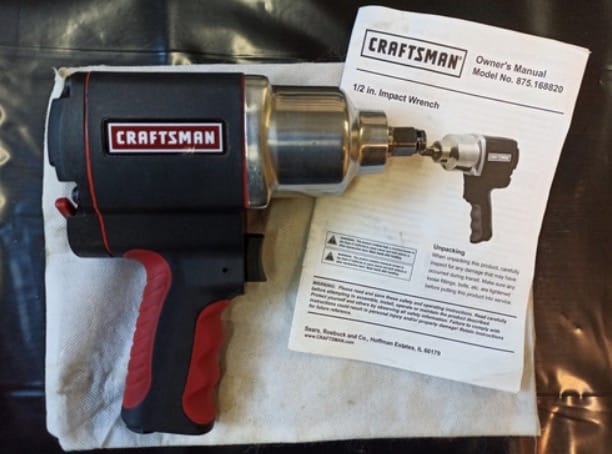When you think about it, it’s kind of amazing how little of people know about how their air impact wrenches work.
I mean, they don’t even know how much PSI is required to run a pneumatic impact wrench!
In this article, we’ll break down everything you need to know about PSI and how it relates to your impact wrench’s performance.
We’ll explore the factors affecting PSI requirements, help you determine the ideal PSI for your wrench, and discuss essential safety and maintenance considerations.
Let’s get started.
Understanding PSI and Impact Wrenches
We’re gonna talk about PSI and how it relates to impact wrenches.
First off, PSI stands for pounds per square inch, and it’s a way to measure air pressure. Basically, it tells us how much air pressure is stuffed into that compressor tank that powers your impact wrench.
But here’s the deal: PSI alone ain’t gonna tell you the whole story about the torque output of your impact wrench.
Torque is that force that you apply to lug nuts, which is influenced by air pressure and the torque setting of your wrench.
Too little torque and your lug nuts will be loose; too much, and they’ll be too tight.
Factors Affecting PSI Requirements
You see, there’s more to this whole PSI thing than just the air pressure; a bunch of factors can change how much PSI your impact wrench needs to work its magic, let’s discuss them:
Big Wrench, Big PSI
It’s simple, really: the larger the impact wrench, the more PSI it needs to generate the same amount of power as a smaller one.
So, when you’re choosing an impact wrench, it’s essential to keep in mind the size and the PSI you’ll need to get the job done right.
Type of Work
The kind of work you’re doing with your impact wrench really matters when it comes to figuring out the perfect PSI.
Let’s say you’re dealing with some seriously stubborn lug nuts that refuse to budge. In this case, you’d need a higher PSI because it’s going to take more force to break them. Higher PSI means more power and torque, which is just what you need for those obstinate nuts.
On the flip side, if you’re working on a job that doesn’t need as much torque you won’t need a ton of PSI. Lower PSI will give you enough power to get the job done without going overboard and potentially damaging whatever you’re working on.
Air Supply System
Now, let’s talk about the air supply system.
Picture this: you’re in your garage, and you’ve got your impact wrench all hooked up, but something’s not quite right because the tool is not receiving enough air.
Turns out, if your air supply system isn’t well-maintained, it could lead to insufficient PSI, because the wrench needs a certain amount of pressure to create the rotational force that applies torque to the lug nut.
When there’s not enough PSI, things can go wrong fast as your impact wrench might stall or even overheat, which can hurt its performance and even cause some damage.
Manufacturer’s Recommendations
You know what else is important? Paying attention to what the manufacturer recommends for your impact wrench’s PSI requirements as they are there for a reason—they’re based on the tool’s design, its intended use, and, of course, safety considerations.
Here’s the deal: manufacturers have spent time and resources to figure out the best PSI for their specific impact wrenches.
So, when they say, “Hey, this is the PSI you need for this tool,” it’s probably a good idea to listen.
After all, they want you to have a great experience using their product, and following their guidelines helps make sure that happens.
How Much PSI for Impact Wrench?
When it comes to PSI for impact wrenches, there’s no one-size-fits-all answer.
The ideal PSI range depends on the size of your impact wrench and the kind of tasks you’re tackling.
- For 1/4″ impact wrenches: These tools are perfect for light-duty tasks like removing small nuts and bolts. For these, you’ll want to stick to a PSI range of around 80-90.
- For 3/8″ impact wrenches: Stepping it up a notch, these medium-sized impact wrenches are more versatile and can handle tasks like changing brake calipers. For these bad boys, you’ll need a PSI range of around 90-100.
- For 1/2″ impact wrenches: Now we’re talking heavy-duty as they can tackle even the toughest jobs, like removing lug nuts from large trucks and SUVs. For these monsters, you’ll want a PSI range of 90-100.
- For 1″ impact wrenches: These behemoths are designed for industrial use, like removing large fasteners from heavy machinery. For optimal performance, you’ll need a PSI range of around 120-150.
Safety and Maintenance Considerations
Impact wrenches are no joke – they’re powerful tools that can make your life a whole lot easier.
So let’s go over some safety and maintenance considerations to ensure you’re using your impact wrench effectively and, most importantly, safely.
Matching Air Supply
When you’re using an impact wrench, you’ve got to make sure the PSI of your air supply matches the requirements of your tool.
If the PSI is too low, your impact wrench won’t have the power it needs to get the job done, leaving you with a half-finished project and a tool that’s working way too hard, which can wear out your impact wrench faster, costing you big time in repairs or replacements.
But if the PSI is too high you can overload your tool with pressure that can cause it to deliver excessive torque, putting a whole lot of stress on the impact wrench. This could lead to a broken tool, overheating, and a hefty repair bill.
Regular Maintenance
Giving your impact wrench regular maintenance and inspections is key to keeping it working safely and efficiently.
To do this you can keep an eye out for any signs of cracks, loose bits, or anything that just doesn’t look right.
And don’t forget to keep them lubed up, a little grease goes a long way in preventing rust and making sure your impact wrench runs like a well-oiled machine.
Secure Connection to Air Supply
Let’s talk about one more crucial thing: making sure your impact wrench is well connected with its air supply as a loose connection can cause all sorts of chaos, from a malfunctioning tool to a wrench that goes off.
So, before you start swinging that impact wrench around, double-check that the connection is secure.
Trust me, it’s better to spend an extra minute tightening things up than dealing with a disaster later.
Frequently Asked Questions
Is 150 PSI good for an air impact wrench?
Well, let me tell you, 150 PSI might just be the standard for a lot of impact wrenches out there.
It’s usually enough to give you the torque and power you need without overdoing it.
Which is better 150 psi or 300 psi for an air impact wrench?
You might think, “Hey, more PSI means more power, right?” With impact wrenches, 150 PSI is often the better choice over 300 PSI.
Why, you ask? It’s all about balance.
At 150 PSI, you get the right amount of power without putting too much stress on your trusty tool. Plus, it also keeps the fasteners safe from damage like stripped threads or snapped bolts.
But if you crank it up to 300 PSI, you might end up with a broken or overheated wrench, and nobody wants that.
So, in the great PSI battle, I’d say 150 PSI is the best option.



